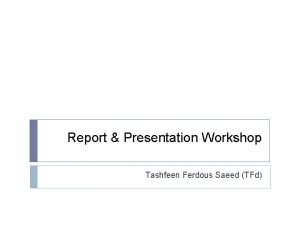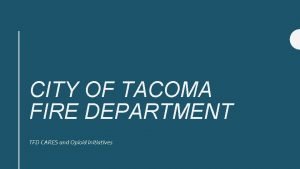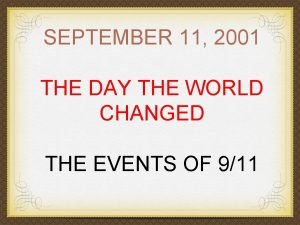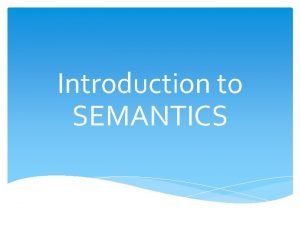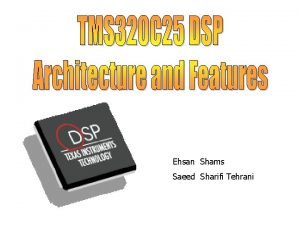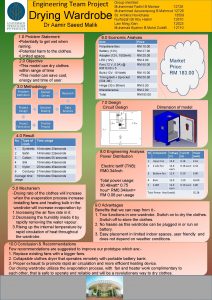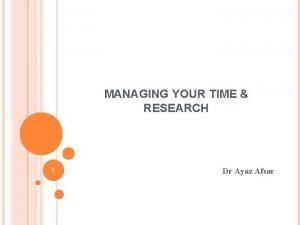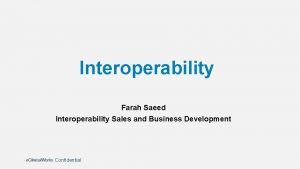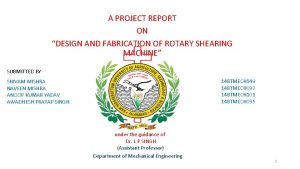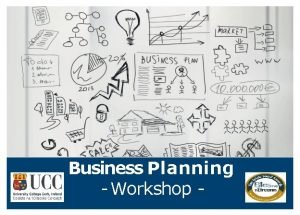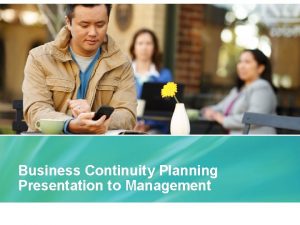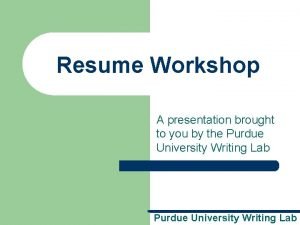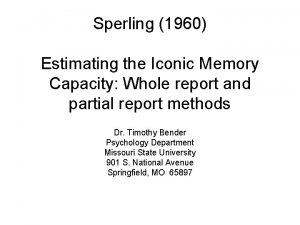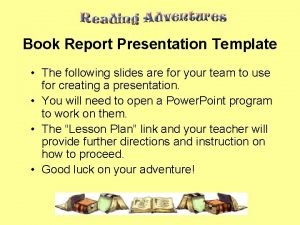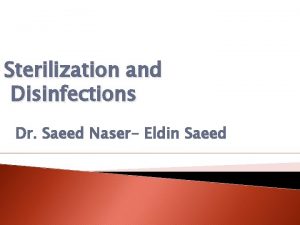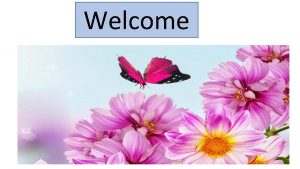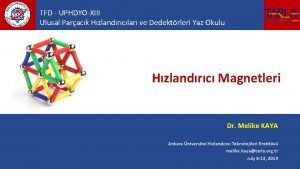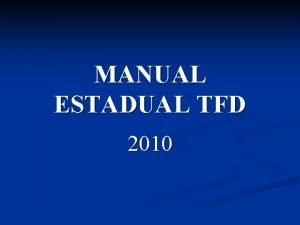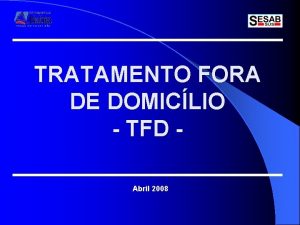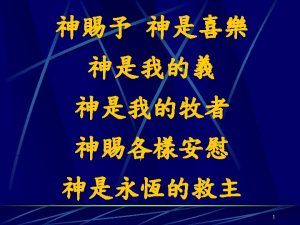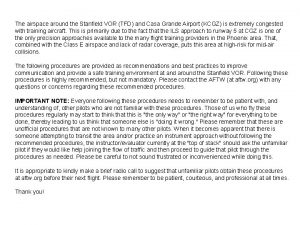Report Presentation Workshop Tashfeen Ferdous Saeed TFd What




















- Slides: 20

Report & Presentation Workshop Tashfeen Ferdous Saeed (TFd)

What is a business report? �A tool used to communicate ideas in the business environment � Address a specific issue or problem � A good report frames the problem correctly and provides in-depth analysis and recommendations � Structure may vary slightly depending on the target reader group

Planning the report � What is the purpose of your report? � Who are the readers of the report? � What are the main messages to be conveyed? � How will the report be structured? � Present recommendations first, then justify � Use numbering for ease

Contents of a report �A title page � Letter of transmittal � Table of contents � Executive summary � Introduction � Recommendations � Findings and discussions � A list of references � Appendices

Title page � Should be brief but descriptive of the project � Include: � The project title � The date of submission of the report � The author(s) � The organization

Letter of transmittal � The letter of transmittal should: � Follow a proper letter format � Remind the reader of their request for the report � State the purpose of the report � Acknowledge any assistance � Indicate future actions to be taken. � Don’ts: � Headlining the letter � Excessive/unnecessary glorification (self or otherwise)

Table of contents � States the pages for various sections. � The reader receives a clear orientation to the report as the table of contents lists all the headings and sub -headings in the report � Use a separate table of figures for any figures (bar charts/pie charts/tables) which you may have � Don’ts: � Manually typing the entire table of contents

Executive Summary � Helps the reader quickly grasp the report’s purpose, conclusions, and key recommendations. � You may think of this as something the busy executive might read to get a feel for your report and its final conclusions. � The executive summary should be no longer than one page.

Introduction � The introduction should: � Briefly describe the context � Identify the general subject matter � Describe the issue or problem to be reported on � State the specific questions the report answers � Outline the scope of the report (extent of investigation) � Preview the report structure � Comment on the limitations of the report and any assumptions made.

Recommendations � When writing recommendations: � Interpret and summarize the findings; say what they mean � Relate the conclusions to the report issue/problem � Limit the conclusions to the data presented; do not introduce new material � Number the recommendations and present them in parallel form � Be objective: avoid exaggerating or manipulating the data

Findings and discussions � Main part of your report and should present and discuss your findings. � Should give enough information, analysis, and evidence to support your recommendations. � Should follow a logical and systematic organization. � The discussion should be subdivided into logical sections, each with informative, descriptive headings and a number.

References � Whenever you use information from other sources, references must be provided in-text and in a list of references. � All references must be in APA format � References can be created at Bib. Me

References � All reports will be screened using Turnitin to prevent plagiarism � Plagiarism penalties: Plagiarism percentage Penalty deduction 0 -20% No deduction 21 -30% 2% 31 -40% 5% 41 -50% 10% 51% and above Fail

Appendices � Provide detailed explanation serving the needs of specific readers � Be clearly and neatly set out � Be numbered/lettered � Be given a descriptive title � Be arranged in the order they are mentioned in the text � Be related to the report’s purpose—not just ‘tacked on’

Some more pointers � Avoid spelling and grammatical mistakes – use Spelling & Grammar Check � Double check to make sure there are no formatting problems � Use proper page numbering � Avoid jargon and stick to clear language � Keep your tone professional and objective � Keep it concise – quality trumps quantity

PRESENTATIONS

Basic Tips � Dress smartly � Speak clearly and firmly � Eye contact is crucial � Don’t stand behind the lectern � Vary voice levels to keep interest � Use gestures � Don’t use notes � Coordinate team members for cohesiveness � Humor can be used sparingly

Content and presenting � Slides are a complement to (not a substitute for) your presentation � Use text sparingly on slides – no more than 30/40 words per slide. � Speak to your audience, not to the screen � Use of visuals and infographics is a good way of presenting information � Summarize everything using a Takeaways slide

SURVEYS

Designing the questionnaire � Keep the questionnaire concise � Keep your questions specific � Consider the question of anonymity � Opt for more closed-ended questions � Likert scales are a good way to gauge preferences � Make sure the appropriate target group is receiving the questionnaires � Forms can be designed easily with Google Forms
 Tashfeen saeed
Tashfeen saeed Zending pv uren onderwijs
Zending pv uren onderwijs Tfd cares
Tfd cares Alnami
Alnami Three challenges in doing semantics
Three challenges in doing semantics Ehsan shams
Ehsan shams Saeed khan wayne state
Saeed khan wayne state Dr aamir saeed
Dr aamir saeed Dr ayaz saeed
Dr ayaz saeed Flucytosine mechanism of action
Flucytosine mechanism of action Dr ayaz saeed
Dr ayaz saeed Dr farah saeed
Dr farah saeed Saad azhar saeed ucp
Saad azhar saeed ucp Conclusion for workshop report
Conclusion for workshop report Project report on fabrication workshop
Project report on fabrication workshop Business strategy workshop presentation
Business strategy workshop presentation Business continuity workshop presentation
Business continuity workshop presentation Resume workshop presentation
Resume workshop presentation Writing a status report
Writing a status report Partial report technique
Partial report technique Book review slide template
Book review slide template
